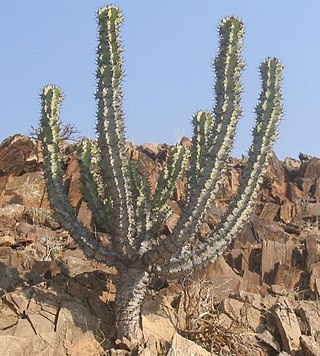Xerophyte
species of plant adapted to survive in environments with little liquid water From Wikipedia, the free encyclopedia
Remove ads
Xerophytes are plants which are adapted to dry/desert areas. They are a type of succulent plant. To survive these harsh conditions, they have special features.[1] For example, a cactus has white hairs which help to prevent water loss. Another example is manzanita plants, which have a thick waxy coating and keep their leaves vertical to the sun.

Adaptions
Some Xerophytic plants sit out a drought. They can still extract water from soil. They may have very salty cell sap and therefore a very low water potential in the roots; they may have very extensive or deep roots or may pick up the slightest dew and survive on that.
Others have special features about their shape or structure (xeromorphs). Thick waxy cuticle (Aloe); hairy surfaces (Edelweiss); dense packing of leaves, reduced leaf size (species of cypress); reduced density of stomata (many cacti); pitted and grooved position of stomata (Ammophila) Water storage in stem and tubers, etc. (baobab). They may also protect this water store from animals by spines and chemicals.
Remove ads
Mechanism table
Remove ads
References
Wikiwand - on
Seamless Wikipedia browsing. On steroids.
Remove ads
